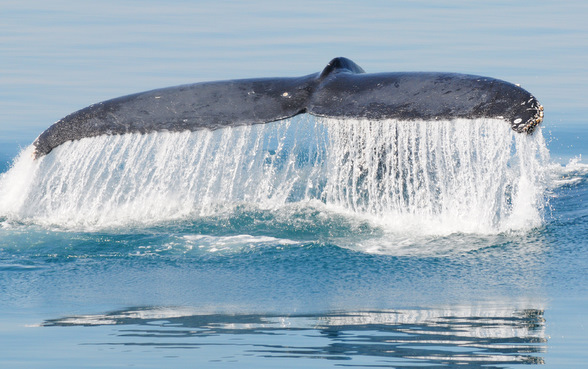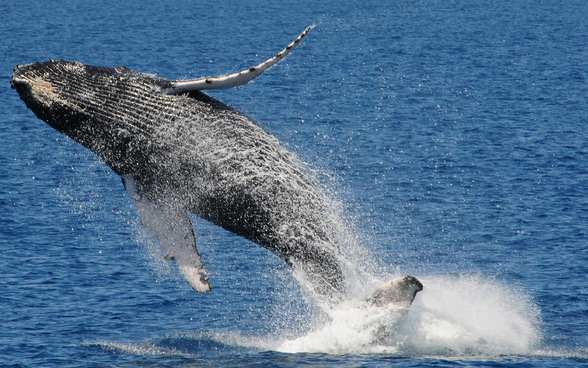Behaviour
Movement
Humpbacks are generally active whales. When resting, they are often seen jumping spectacularly out of the water, rolling belly side up, or waving their tails and fins out of the water.
They have one of the longest migrations of any mammal and migrate alone or in temporary aggregations of usually non-related individuals.
Breeding
Females with their new born calves often rest quietly at the surface.
Field Guide
Improve your identification skills. Download your Humpback Whale guide here!





